|
John Tyman's Cultures in Context Series Torembi and the Sepik A Study of Village Life in New Guinea |
|
Topic No. 17: The Spirit House and Local Government ~ Photos 332-347 |
|
John Tyman's Cultures in Context Series Torembi and the Sepik A Study of Village Life in New Guinea |
|
Topic No. 17: The Spirit House and Local Government ~ Photos 332-347 |
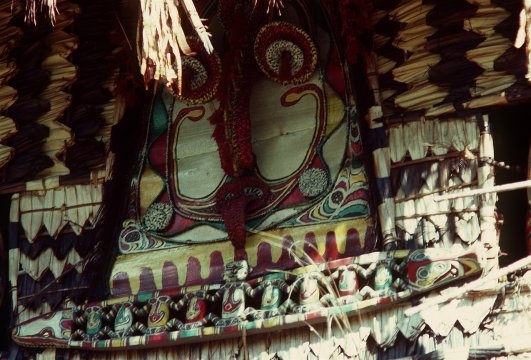 |
| 335. People here believe that the spirits of their ancestors live in the forest, but these are invited to the haus from time to time, for consultation. It is, therefore, decorated with their faces. |
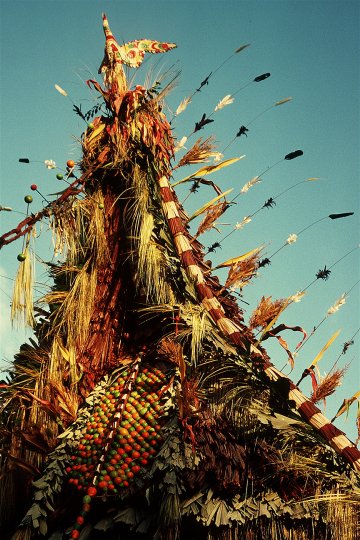 |
| 336. The apex of the gables of the Spirit House will also display the totems of the clans represented. This is the tarragaw or sea eagle. |
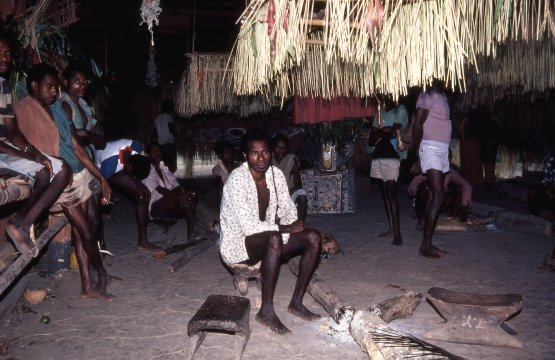 |
| 337. Inside the haus the men either squat on stools near the fire, or stretch out on the benches which line the walls. The fires smoulder day and night, to discourage mosquitos. |
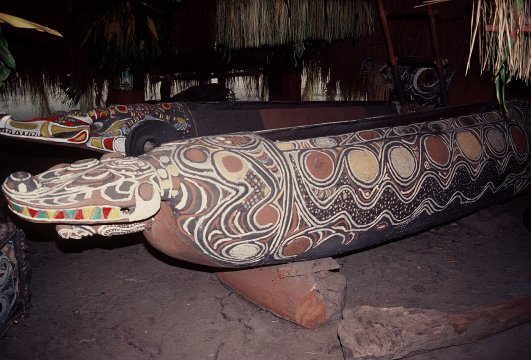 |
| 340.The heavy slit gongs or garamuts are positioned at one end of the building, and are decorated with the totem of the moiety. |
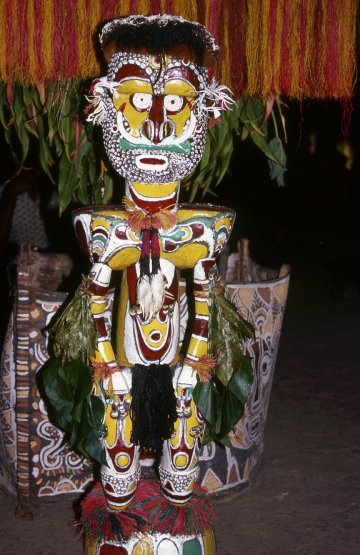 |
| 342. From the point of view of local government, the most important item in the men’s house is the debating stool, which features significantly in all debates. |
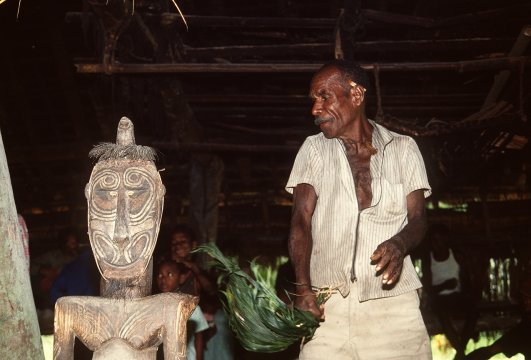 |
| 343. The stool has broad shoulders, on which will be placed a switch
made of leaves.
During a debate the man who has the floor will strike the stool from time to time, to emphasise his points. |
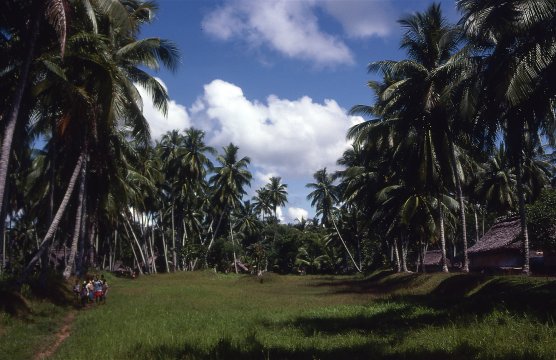 |
| 346. Outside the Spirit House is a large dancing ground – seldom used now, but important in earlier days, especially the mound in the background, known as a ‘waak’. |

![]()
Text, photos and recordings
by John Tyman
Intended for Educational Use
Only.
Copyright Pitt Rivers Museum,
Oxford University, 2010.
Contact Dr.
John Tyman for more information regarding licensing.
![]()
Photo processing, Web page layout,
formatting, and complementary research by
William Hillman ~ Brandon, Manitoba
~ Canada
www.hillmanweb.com